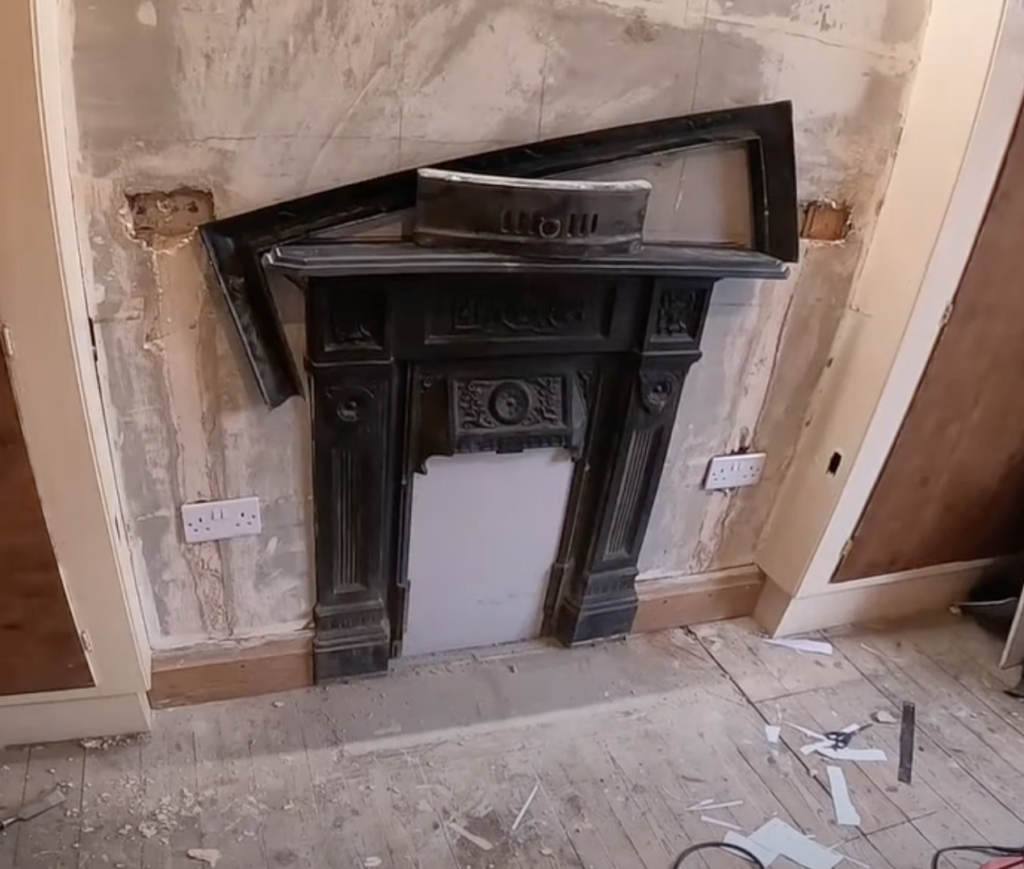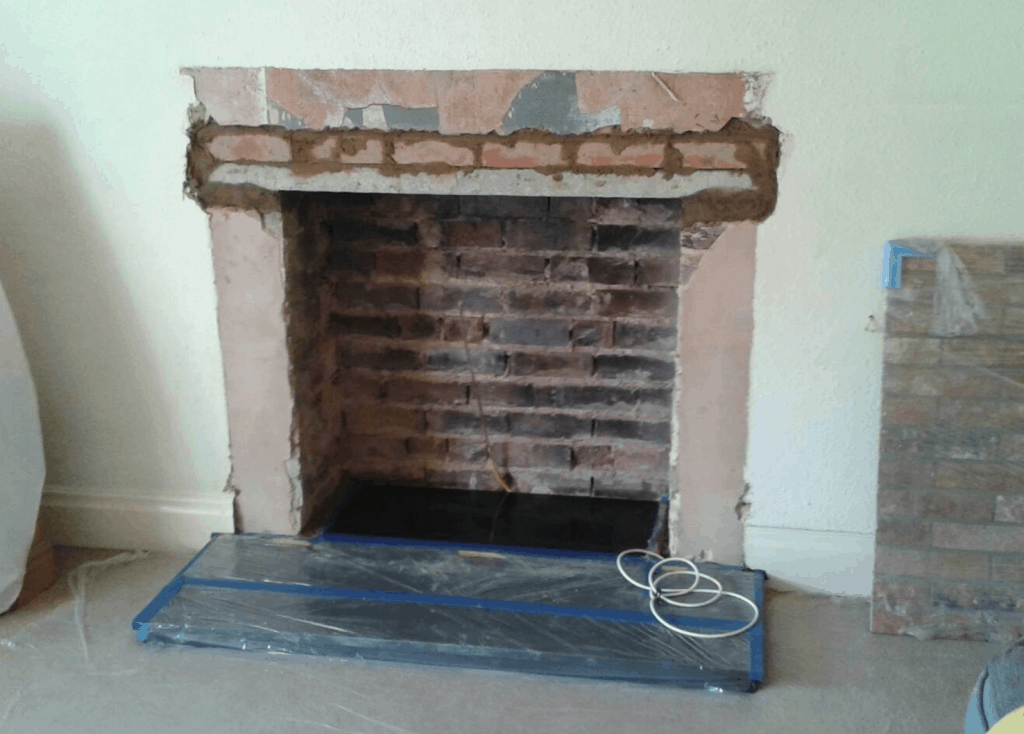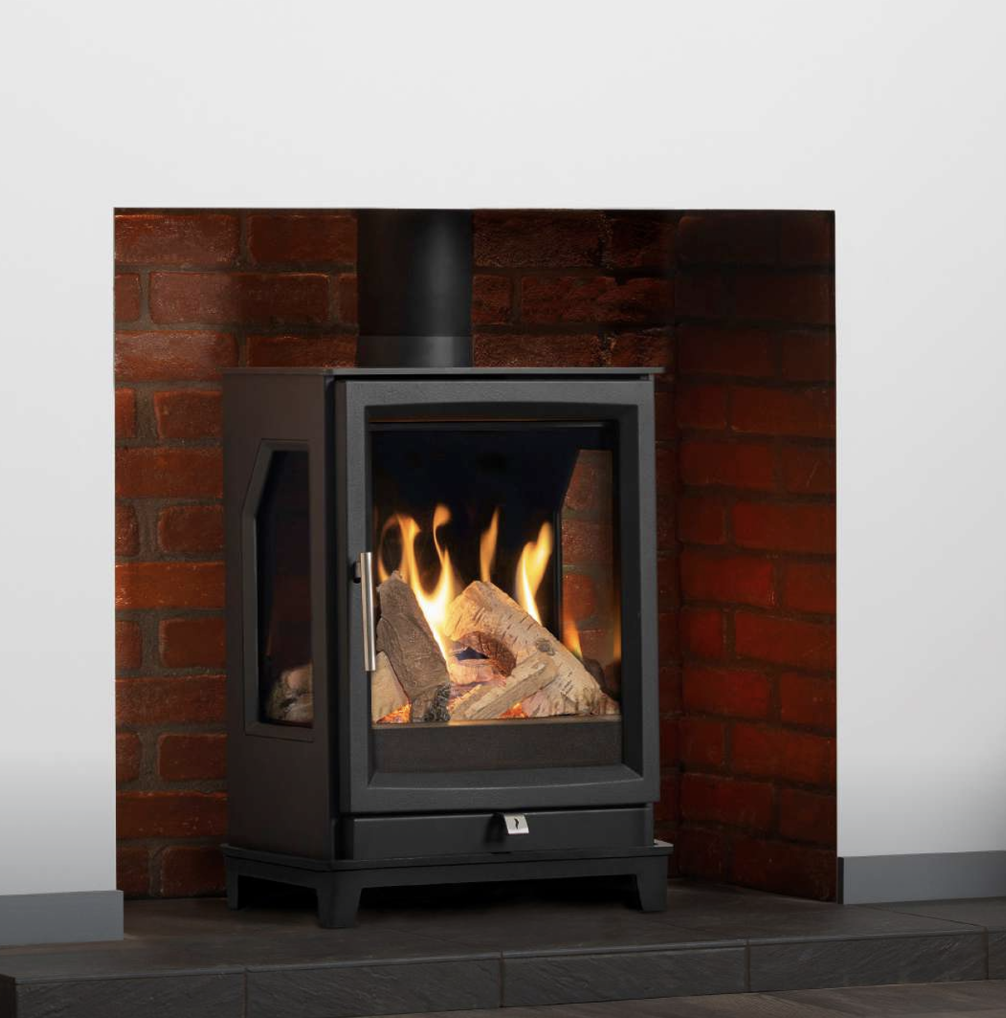Removing an old fireplace can breathe new life into a room, creating a modern look or to make way for a modern fire, which may be electric, gas or wood-fired. It’s an exciting project, but removing an old fireplace requires careful planning and safety precautions to avoid damage or injury. While you may have the skills to remove an old fireplace, a new fire should only be installed by a professional. Here’s a step-by-step guide to safely and effectively remove an old fireplace.

Why remove an old fireplace?
There needs to be a reason to remove your fireplace. It may have been there for decades or even centuries if you live in a particularly old property. For most homeowners, the decision to remove an old fireplace falls under a number of reasons:
Aesthetic Reasons: Old fireplaces may no longer suit your decor or design preferences.
Functional Issues: Non-operational or inefficient fireplaces can take up valuable space without adding utility.
Reappointing: You may wish to totally or partly remove the fireplace in favour of a new, high-efficiency fire. Some may wish to reappoint the original open fire; just be aware if you are in a smoke control area, you may not be able to light it. Many parts of the UK are smoke control areas where you cannot release smoke from a chimney, or you can only burn authorised fuel, unless you use an appliance approved by Defra (also known as an ‘exempt appliance’ or ‘Defra approved appliance’).
Preparation
1. Assess the Fireplace Type
Before starting, determine the type of fireplace: Brick/Masonry Fireplace: Built into the structure of your home, these are more challenging to remove. Prefab Fireplace: Factory-built units, often easier to dismantle. Gas or Electric Fireplace: These require disconnection; a qualified professional should do this.
2. Check Local Regulations
Permits: Some areas may require permits for fireplace removal, especially for gas or wood-burning units.
Building Codes: Ensure your project complies with local safety standards.
3. Gather Tools and Materials
Crowbar or pry bar
Sledgehammer
Screwdriver or drill
Utility knife
Dust mask and safety goggles
Heavy-duty gloves
Plastic sheeting or tarp
Buckets or bags for debris
4. Turn Off Utilities
Gas Fireplace: Shut off the gas supply, and a professional should disconnect the line.
Electric Fireplace: Turn off the power at the breaker box.
Chimney: Ensure no debris can fall during removal.
5. Step by Step Guide
Step 1: Protect the Area
Lay down plastic sheeting or tarps to catch debris. Also, remove furniture or cover it in the room, as dust and debris will inevitably cover a greater than anticipated area.
Step 2: Remove the Surround

For brick or stone surrounds, use a chisel and hammer to loosen the material. Start from the top and work downward. For wood or prefab surrounds, unscrew or pry them off carefully to avoid damaging the walls.
Step 3: Disconnect the Fireplace (if gas or electric)
Gas Fireplace: A qualified professional will be able to do this.
Electric Fireplace: Disconnect wiring after confirming the power is off.
Step 4: Dismantle the Firebox
Remove the firebox by unscrewing it or prying it away from the wall. For masonry fireplaces, this may involve breaking it apart with a sledgehammer.
Step 5: Chimney or Flue Considerations
Depending on your end goal, you may wish to remove the chimney or flue completely or keep it and/or upgrade it. Specialist help will be required here.
Step 6: Repair and Restore
You can patch holes in the wall or floor left by the fireplace, and reseal and insulate the area to improve energy efficiency. If you want to incorporate a new fire after the original fireplace has been removed, you have a wide range of options. This is more of a specialist job, so if you have not done so already, please talk with a local fire showroom who will be able to advise.

Removing an old fireplace can be an exciting project, and while there are things many DIYers can do, you must exercise caution and be aware of your level of experience in doing such jobs. One last thing to consider is what you can do with the removed fireplace. This depends on the type of fire and the condition of the fire when you’re done. You may wish to recycle all or part of it, many components like bricks or metal can be recycled. You may wish to sell the fire or fireplace – again, this very much depends on the condition of it after you have removed it. Or you may simply wish to dispose of it at your local recycling centre.








